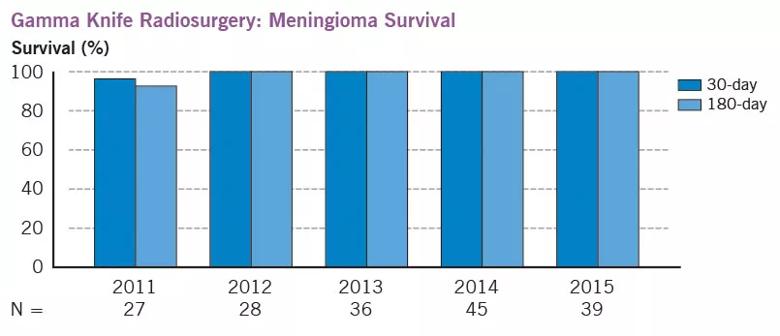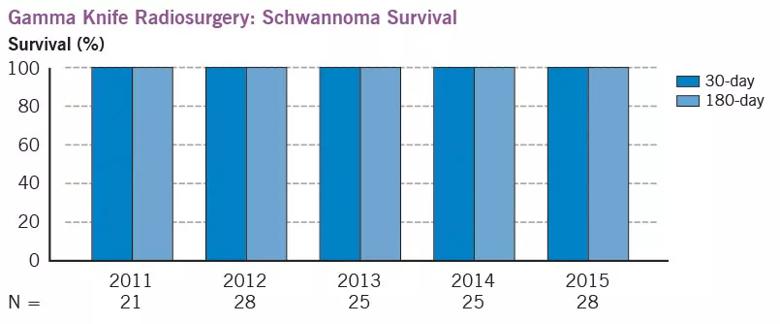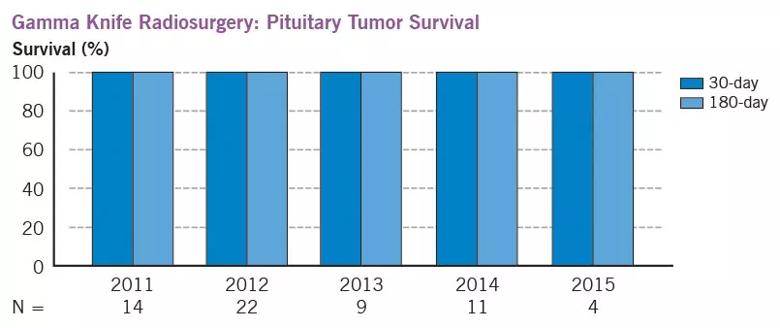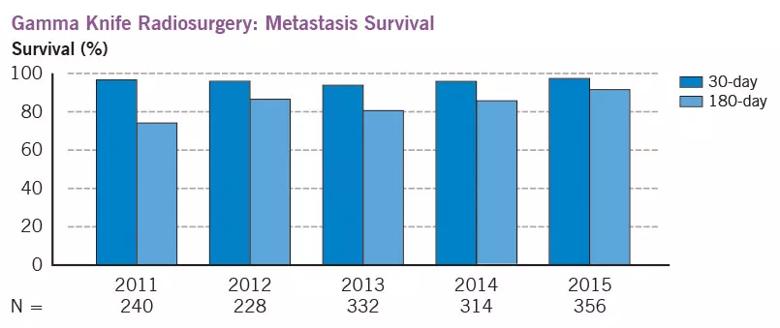Advertisement
Still advancing after all these years

For neurosurgeons trained in the past decade or two, radiosurgery in the days before Gamma Knife® stereotactic radiosurgery may seem almost like practicing in a different reality. But Cleveland Clinic neurosurgeon Gene Barnett, MD, MBA, remembers those days well.
Advertisement
Cleveland Clinic is a non-profit academic medical center. Advertising on our site helps support our mission. We do not endorse non-Cleveland Clinic products or services. Policy
“Before 1997, we used a kind of modified linear accelerator to apply radiation to identified cancer targets,” recalls Dr. Barnett, founder of Cleveland Clinic’s radiosurgery program and Director of its Rose Ella Burkhardt Brain Tumor and Neuro-Oncology Center. “The process was so cumbersome that it could take over a day to simply plan a single procedure.”
Dr. Barnett chose 1997 as his reference point because it was early that year — 20 years ago — that Cleveland Clinic began offering Gamma Knife services for the treatment of brain tumors. “The Gamma Knife has revolutionized brain surgery,” he notes. “For certain disorders, we’ve gone from performing conventional surgery in about 90 percent of surgical cases to about 90 percent Gamma Knife surgeries over the past 20 years, with better outcomes for our patients.”
The arrival of the first Gamma Knife at Cleveland Clinic in January 1997 — a Leksell Model B — brought dramatic improvements, including a better ability to match the shape of radiation to the tumor.
But treatment planning and delivery remained a tedious process, requiring about 15 to 20 minutes to align each target. Changing targets required manually adjusting not only the patient but the several-hundred-pound collimators, the devices that focus the radiation beam on the tumor. Dr. Barnett recalls that in the interest of avoiding excessively long procedure times, surgeons generally limited treatment to fewer than six targets per surgery.
Capabilities took a giant leap forward about 10 years ago with the acquisition of the Leksell Gamma Knife Perfexion™ at Cleveland Clinic, the second hospital in the country to obtain one, according to Dr. Barnett. This generation of the system features fully automatized collimators, which allow the patient to be repositioned robotically.
The improvements have enabled the performance of procedures involving dozens of targets. Accuracy has improved while treatment times have been reduced.
The success of Cleveland Clinic’s Gamma Knife program is reflected in recent outcome snapshots for several common applications of the procedure. Rates of 180-day survival following Gamma Knife radiosurgery have held steady at 100 percent over the four most recent years of complete data for patients with meningioma (first graph below) and over the five most recent years of complete data for patients with schwannoma (second graph below) and for patients with pituitary tumors (third graph below).


Advertisement

“The outcomes speak to the fact that these are low-risk procedures, and that Gamma Knife is an excellent alternative to brain surgery in many situations,” Dr. Barnett comments. He adds that conventional brain surgery is still an important option for patients with certain tumors, including those that are very large and some that press against a critical structure.
Gamma Knife is also used for metastatic disease, which is notoriously challenging to treat by any means. Outcomes of nearly 1,500 Cleveland Clinic patients with brain metastasis treated from 2011 to 2015 reveal excellent survival rates (see graph below). Dr. Barnett notes that improvements over recent years are likely due to better patient selection and the availability of more effective adjunctive treatments.

A clinical trial is now underway at Cleveland Clinic that combines Gamma Knife with traditional surgery: The Gamma Knife is used to sterilize metastases before a conventional operation to remove the primary tumor, limiting the risk of tumor seeding.
For any brain procedure, resulting function is of concern, as structures neighboring the tumor can be damaged by either conventional surgery or Gamma Knife radiation. According to Dr. Barnett, improvements to the Gamma Knife have made radiation delivery more precise, resulting in less collateral damage despite the ability to deliver more radiation to the tumor.
Advertisement
Data from 2015 on patients’ functional impairment following Gamma Knife radiosurgery at Cleveland Clinic show that performance status, as measured by the Karnofsky Performance Scale, either remained stable (87 percent) or improved (5 percent) in 92 percent of patients. Change was defined as a difference of at least 20 points on the scale. Dr. Barnett attributes the worsening function among the remaining 8 percent of patients to progression of systemic disease.
In early 2017, Cleveland Clinic became the first center in Ohio to offer the new Leksell Gamma Knife Icon™, which is housed in Cleveland Clinic’s new Taussig Cancer Center building.
One of the new machine’s primary enhancements is the ability to use a mask as a stereotactic reference instead of a rigid frame that screws into the skull. Not only is the mask more comfortable for patients, but it enables treatments to be divided over longer time periods, allowing the Gamma Knife to be used for more complex cases. Use of a mask is made possible by a cone-beam CT scanner mounted on the front of the Gamma Knife. It also allows treatment of some tumors in the cervical spine.
Advertisement
Advertisement

Polygenic risk score could help predict who will develop this aggressive breast cancer

New guidelines offer insight into emerging therapies, dental issues and more

Clinical trial to assess the value of nutritional, physical therapy and social supports prior to preoperative chemotherapy

Research demonstrates improved overall survival for patients receiving comprehensive treatment for breast cancer in addition to radiation or surgical intervention for brain cancer

Platinum-eligible phase 3 trial of enfortumab vedotin and pembrolizumab yields ‘unprecedented data’

Cleveland Clinic Cancer Institute brings multidisciplinary care, precision oncology and clinical research to the United Arab Emirates

Extent of baseline burden impacts progression-free and overall survival

Further study warranted to better understand the clinical implications of these findings